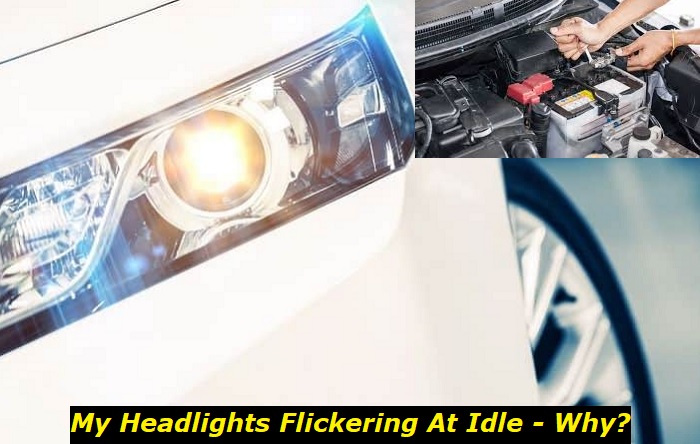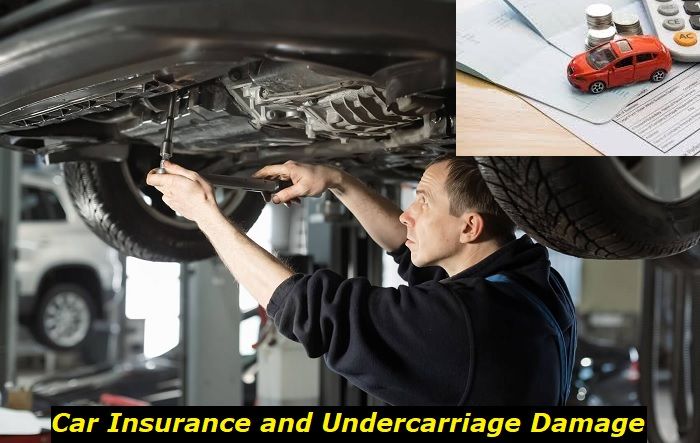Do you notice your headlights flickering at the traffic stop, the McDonald's Drive Thru, and other places where your car is idling? This is a common problem with headlights. There are some possible causes for headlight flickering and a few things you can do to help yourself.
Voltage problems highlights
- Level of urgency:high
- DIY inspection:possible but complicated
- DIY repair:impossible
- Can you drive?yes
- Price for repairs:$150 - $350
- Symptoms:anomalies with electrical equipment, dimming or flickering lights
- Ways to solve:use multimeter to test various equipment and find the source of voltage issues

Headlights Flickering at Idle: Here's What Can Be the Reason
Below are a few reasons your headlights keep flickering at idle:
1) Weak Car Battery
A weak or failing car battery is a prevalent cause for headlights flickering when the car is idling.
Your car battery is a significant source of the electric energy your car uses to power the headlights and many other electrical components. Your headlights and many other electrical controls rely on the car battery to function properly.
A weak or failing battery will give out less electric power than your headlights need to stay fully lit. This is why you may find your headlights flickering not only when the car is idling but sometimes when it is also in motion.
Besides flickering, a failing battery may also cause headlight dimming.
A car battery usually has a lifespan of about 3-5 years, depending on the weather conditions of your location, how long you leave your car parked, the number of aftermarket electrical accessories you have installed in your car, and how often you leave the car idling.
If you have flickering headlights when your car is not in motion, and your vehicle has a battery warning light, the dying battery may be the culprit.
However, whether the battery is to blame or not, fully lit headlights are crucial for your safety and that of other road users. So, whenever you notice abnormal signs like flickering headlights accompanied by the battery warning light on the dashboard, you want to test the battery to be sure it is weak and replace it once you confirm that it is the cause of the flickering.
2) Faulty Headlight Switch
A faulty headlight switch may also be the reason for the flickering headlights. Headlight switches are usually mounted on the steering column. They come in various forms, such as buttons or knobs, but they control low and high-beam lights.
A faulty headlight switch may receive power in some cases, and in others, it may not. But once your switch becomes faulty, it will not relay power to the headlights well, and this can lead to the flickering headlight switch when your car is idle.
3) Old Bulbs or Lamps
Old or worn-out bulbs and lamps also cause flickering headlights when the car is not in motion.
Their cords will often burn out for headlamps that use halogen bulbs with thin filaments. When this happens, you'll need to replace the cords. But the flickering will occur as the broken filament ends touch sporadically.
For headlamps that use LED lights, the LEDs usually flicker as they age toward expiration.
4) Loose Connectors
When your headlight fuse is not seated properly, or the connection is loose, your headlights may flicker when your car is idle and in motion.
Insufficient contact will make your headlights flicker, and this cause can be very problematic to locate. You may notice the flickering more often when you ply bumpy terrains.
Generally, when the connectors or fuses are not making sufficient contact for the adequate supply of electric energy to the bulbs, your headlights will flicker.
5) Faulty or Burned Wires
It is highly unlikely to have wrongly connected headlight wires, as this will be obvious immediately after you drive the car. But it is common to see wires get burnt because of the heat under the hood leading to the flickering because of the poor connection to the bulb.
When the wires melt, they may continue to relay power but less efficiently than they would if they were in good condition. This may be the reason for the flickering headlights at idle.
Sometimes, the wires may be worn out or loose at the end of the connector instead of burnt. When this happens, your headlights will often blink and, at times, burn out.
6) Dying Alternator
A failing or dying alternator will not charge your battery, affecting how much power your headlights get. A failing alternator can cause your headlights to flicker, dim, and even completely inoperable.
Alternators in cars are responsible for powering the electrical components of your car while the engine is running. The alternator powers your car's headlights, power windows, electric shield, and many other electric systems.
The alternator also charges the battery, which is also another source of energy in your car. But a dying alternator will not charge your battery. This means that the charge in your battery will be drained quicker by the electric systems in your car.
Many car brands will alert you to a faulty or failed alternator by illuminating the battery light on the dashboard. Apart from your battery, if your headlights are flickering, checking your alternator is also advised.
Diagnosing and Fixing the Headlight Flickering Issue
Diagnosing the problem can be challenging because there are too many places to check. But a rule of thumb is to start with the obvious.
So, you want to check the following:
- Headlight Bulbs
The first step to diagnosing the problem is to inspect the headlight bulbs. You want to unscrew the protection cover on your headlight bulbs. Unscrew the bulbs and inspect them for damage or discoloration.
When you screw the bulb back into its holder, check to see if it fits well or wobbles from being loose.
If the bulbs are undamaged and fit firmly into their holders, you want to check other possible causes.
- Battery and Alternator
Look out for the battery warning light to see if there is an issue with the battery or the alternator.
Visually assess the condition of your battery. Check for any grime or debris around the terminals, especially. Inspect the wires to be sure none is loose or damaged. If all is in order, you want to test the battery next. The goal is to know its state of charge.
You can test the battery at a battery shop. Most battery and auto shops will test your battery for free.
You want to check your alternator when you find that the battery is in good condition. Start your car and disconnect the negative cable of your battery. Ideally, the engine of your vehicle ought to keep running.
If your vehicle stalls or dies, it means you need to replace your alternator. You will need an expert mechanic to do the replacement for you. Changing an alternator normally takes 2-3 hours.
- Fuse Wiring Panel
If the battery, headlight bulbs, and alternator are in good condition, the next place to check is the fuse wiring panel.
If you notice any burnt wires or fuses in the fuse wiring panel, you want to hire an expert to help you with the repairs. Fixing electrical issues in your car is very dangerous. Unless you are an expert, it would be best to hire one to do the repairs.
You can also check the fuse panel behind the steering wheel column for any damage.
Changing Headlight Bulbs - How?
If the problem seems to be broken headlight bulbs, then replacing the worn-out bulbs will get you back on track. But how do you change the headlight bulbs?
Open the hood of your car and secure it. Find the location of the holder by tracing the wires. The holder is usually connected to three wires, and they have a cylindrical shape. They are usually held down with plastic or metal locks.
Disconnect the headlight wires and remove the bulb. You want to grasp the shank of the holder and gently unscrew the old bulbs. Finish off by screwing in the new bulbs.
But when installing the new bulbs, you must avoid holding the bulb directly. Holding the bulb directly will cause the grease on your hand to blur the bulb with black streaks.
You want to use a paper rag or towel when installing the bulbs to avoid staining them.
Hold the bulbs against the rear of the headlights and attach them. Reconnect the wires and fix the protector. Check the lights by turning them on. You want to check it a few times to ensure it works properly.
Bottom Line
Generally, a problem with the battery or the alternator will cause the headlights to flicker. But other possible causes include burned wires, loose connectors, worn-out bulbs, and a faulty switch.
If your car has this problem, you must first check the obvious. You can do it yourself if it is a simple repair, like plugging the connectors back or changing the battery.
But if it is a complex repair like replacing burned wires or the alternator, it would be best to call a mechanic to do the repairs.
About the authors
The CarAraC research team is composed of seasoned auto mechanics and automotive industry professionals, including individuals with advanced degrees and certifications in their field. Our team members boast prestigious credentials, reflecting their extensive knowledge and skills. These qualifications include: IMI: Institute of the Motor Industry, ASE-Certified Master Automobile Technicians; Coventry University, Graduate of MA in Automotive Journalism; Politecnico di Torino, Italy, MS Automotive Engineering; Ss. Cyril and Methodius University in Skopje, Mechanical University in Skopje; TOC Automotive College; DHA Suffa University, Department of Mechanical Engineering






Add comment